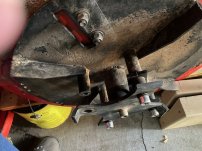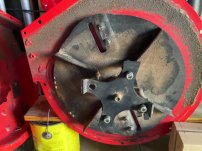CarbideBob
Diamond
- Joined
- Jan 14, 2007
- Location
- Flushing/Flint, Michigan
The correct amount of torque is bolt stretch.
Here is where anti-seize or oil come into play.
Dry some or rusty much torque is lost to friction, any type of lube changes this torque efficiency or loss under pressure.
On super critical stuff you measure the elongation or "bolt stretch".
I realize this not super fancy install but there can be a huge variation in dry and rusty vs new and lubed. Easy 40%.
Here is where anti-seize or oil come into play.
Dry some or rusty much torque is lost to friction, any type of lube changes this torque efficiency or loss under pressure.
On super critical stuff you measure the elongation or "bolt stretch".
I realize this not super fancy install but there can be a huge variation in dry and rusty vs new and lubed. Easy 40%.



